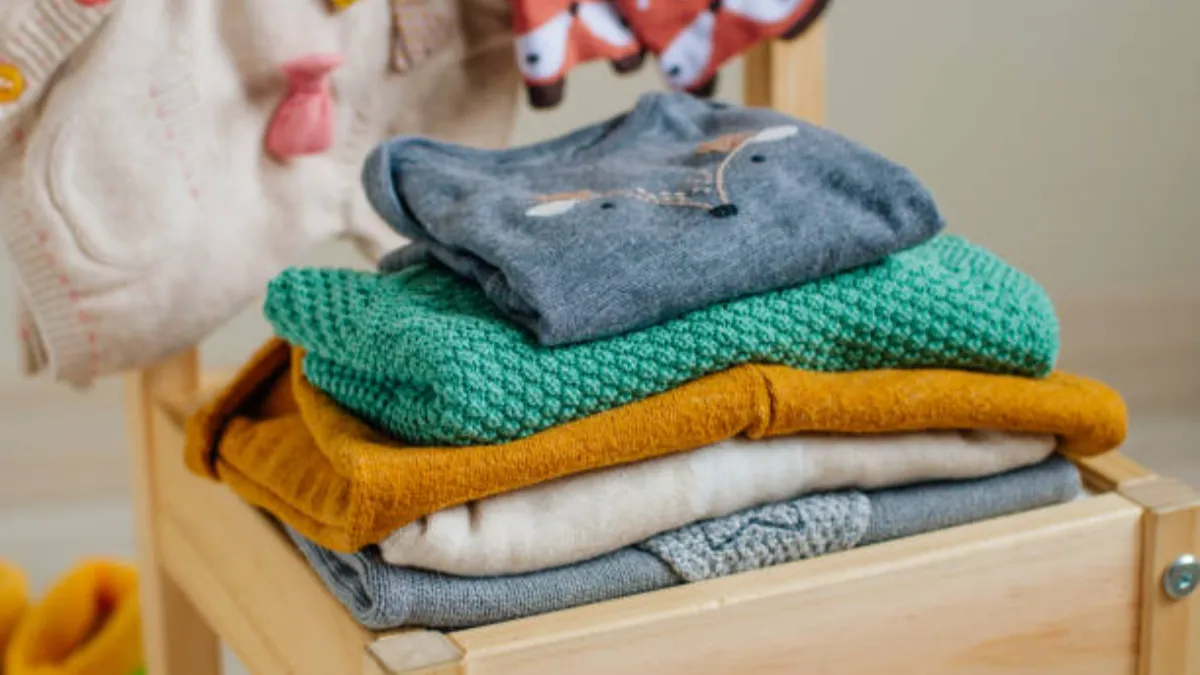O que é uma abaya?
Abaya é uma vestimenta larga e comprida que cobre o corpo. O nome vem da palavra árabe "abu" ou "ayb", que significa "pai de", e "yā'a" ou "yā'ah", que significa "duas vestes".
A abaya está intimamente associada à Arábia Saudita e seus valores religiosos. É usada por mulheres muçulmanas em muitas partes do mundo, incluindo Malásia, Paquistão e Índia.
A abaya cobre todo o corpo, exceto o rosto, as mãos e os pés. O modelo mais comum é o preto, mas você também pode encontrá-lo em outras cores. A abaya geralmente tem mangas compridas e vem com um capuz que pode ser puxado sobre a cabeça para proteção extra do sol ou da chuva.
A abaya recebeu muitos nomes ao longo da história e das culturas, incluindo kaftan, djellaba, gallabiyah e umaniya.
Tipos de Abayas
Existem muitos tipos de abaya, que é uma vestimenta tradicional usada por mulheres muçulmanas. A abaya mais simples é feita de uma única peça de tecido e não possui botões, zíperes ou outros fechos. Esse tipo é geralmente usado por mulheres nos Estados do Golfo e em outros países onde os códigos de vestimenta islâmicos são amplamente observados.
Outros tipos de abayas incluem:
Abayas tradicionais:
Elas têm mangas compridas que cobrem os braços e chegam até os pulsos. Também têm um decote alto que cobre a maior parte do rosto, deixando apenas uma área descoberta ao redor dos olhos para que você possa ver claramente. As abayas tradicionais vêm em uma ampla gama de cores e estilos, incluindo aquelas com bordados.
Abayas modestas e modernas:
Elas são semelhantes às tradicionais, mas são mais elegantes e vêm com designs modernos, como mangas curtas ou recortes.
- Thobe, que é uma peça de roupa longa, na altura dos tornozelos, com mangas largas. Geralmente é feita de um material leve e usada com uma roupa íntima, como um kaftan ou um body. Os thobes são normalmente usados por homens em países como Arábia Saudita, Omã e Iêmen. No entanto, também são populares entre mulheres em outros países, como Bahrein, Paquistão e Somália, onde se tornaram parte do código de vestimenta tradicional.
- Djellaba, que é um robe largo com mangas largas que vem em muitos estilos e variações diferentes. No Marrocos, por exemplo, a djellaba é conhecida como burrata, enquanto na Argélia é chamada de jaqueta zuavé. A palavra djellaba vem do árabe jilbab, que significa "velar".
Se você está planejando comprar uma abaya, pode ficar confuso com os diferentes tipos de abaya disponíveis no mercado. Diferentes estilos de abaya proporcionam visuais diferentes, e não existe uma solução única para todos os tipos de abaya.
Aqui estão alguns dos tipos mais populares de abayas:
Abaya longa
A abaya longa é um dos tipos de abaya mais populares no mercado. Geralmente é usada sobre um vestido ou saia e pode ser usada com diversos lenços de cabeça, incluindo o hijab e o khimar. A abaya longa tem um corte solto que esconde o formato do corpo e facilita os movimentos. As mangas desse tipo de abaya geralmente são longas o suficiente para cobrir completamente as mãos, e muitas pessoas preferem esse tipo porque lhes dá mais liberdade de movimento sem se sentirem restringidas pelas roupas.
Abaya curta
A abaya curta é outra opção popular entre as mulheres muçulmanas que desejam se cobrir e, ao mesmo tempo, se movimentar livremente. Este tipo é ideal para quem deseja usar algo confortável que não restrinja seus movimentos o tempo todo. As mangas são mais curtas do que as encontradas em camisas de manga comprida.
A abaya é religiosa?
Abaya não é uma vestimenta religiosa, é uma vestimenta tradicional.
As abayas são consideradas por muitas pessoas como um dever religioso para as mulheres muçulmanas. No entanto, isso não é inteiramente verdade, pois O Profeta Muhammad (que a paz esteja com ele) nunca disse que o uso de abayas é obrigatório para mulheres muçulmanas. Ele mencionou isso apenas em um hadith (tradição) sobre uma mulher que lhe disse que estava com calor porque estava usando um vestido justo por baixo da abaya, então ele a aconselhou a usar roupas mais folgadas por baixo. Em outro hadith, ele também mencionou que não deveria haver véu entre homens e mulheres, exceto suas roupas, então ele pode ter querido dizer que não deveria haver véu entre homens e mulheres, exceto suas roupas ou corpos enquanto estiverem juntos em casa ou em locais públicos onde se encontram pessoalmente, como mercados.
Abaya é uma palavra árabe para "manto". Também é conhecida como khimar em malaio e na Indonésia, jilbab na Indonésia, baju koko na Malásia e burka ou chadri no Afeganistão.
É usado por mulheres em muitas culturas muçulmanas e não é exclusivo do islamismo. Na verdade, a abaya é anterior ao islamismo, com a referência mais antiga conhecida ocorrendo na Mesopotâmia por volta de 2000 a.C.
A abaya existe desde os tempos antigos, quando era usada inicialmente pelos homens como uma vestimenta externa solta para se protegerem de queimaduras solares ou como forma de se manterem aquecidos em climas frios. Mais tarde, tornou-se popular entre as mulheres, que a usavam para cobrir o corpo ao fazer compras ou jantar em restaurantes.
A abaya faz parte da cultura árabe há séculos; foi introduzida pelo próprio Profeta Muhammad (que a paz esteja com ele)! Hoje em dia, tornou-se parte integrante da vestimenta muçulmana para mulheres em todo o mundo! O motivo mais comum pelo qual algumas mulheres muçulmanas usam abayas é que elas a consideram parte de sua cultura e tradição, transmitidas por suas mães, avós ou bisavós que viveram em países árabes antes de migrarem para outras partes do mundo, como Europa, América ou até mesmo África!
Como usar uma abaya?
Para usar uma abaya corretamente, você precisa cobrir todas as partes do corpo, exceto o rosto e as mãos. Sua cabeça deve ser coberta por um lenço ou hijab (cobertura para a cabeça). No entanto, algumas abayas vêm com lenços ou hijabs embutidos, então não há necessidade de se preocupar em colocá-los separadamente; basta vestir a abaya por cima de suas roupas normais e pronto! Você está pronta para sair!
Para saber mais sobre como usar uma abaya, aqui estão algumas dicas:
- Dê estilo à sua abaya. Escolha entre uma variedade de designs e cores, incluindo estampas florais e cores sólidas.
- Use a abaya com leggings ou meia-calça para um visual mais estiloso.
- Certificar-se o comprimento da sua abaya passa dos seus tornozelos. A bainha deve ficar pelo menos 5 a 10 cm acima dos seus pés quando você estiver em pé.
- Escolha um tecido que seja leve mas ainda opaco o suficiente para cobrir suas pernas e braços adequadamente. Isso pode variar dependendo de onde você mora — em climas mais quentes, o tecido mais fino será suficiente, enquanto em climas mais frios, tecidos mais grossos são necessários para mantê-lo aquecido e confortável!
- Se você estiver usando uma saia ou vestido longo por baixo da abaya, certifique-se de que ele fique bem ajustado na cintura para que não escorregue quando você se sentar ou se curvar. Você não quer que ninguém veja o que está por baixo!
Onde a abaya é usada?
A abaya é usada no Oriente Médio e em outros países como Paquistão, Malásia e Indonésia. Em alguns países, como Turquia, Irã e Arábia Saudita, as mulheres muçulmanas não são obrigadas a usar abayas, mas sim saias longas ou vestidos que cubram seus corpos completamente.
Abaya é usada por
A abaya não é usada apenas no Oriente Médio, mas também por mulheres em outros países, como Indonésia e Malásia. Algumas mulheres muçulmanas também usam abaya para ir à escola ou ao trabalho. Em alguns países, as mulheres muçulmanas não são obrigadas a usar abaya. No entanto, elas ainda são incentivadas a fazê-lo por suas famílias e comunidades. Na Indonésia, por exemplo, usar uma abaya é visto como um sinal de respeito a Deus e à cultura do país.
A Origem e Evolução da Abaya
A palavra “abaya” vem da palavra árabe “aba”, que significa “manto”. Abaya é uma capa tradicional que se originou em Arábia Saudita Durante o século VII, depois que o Profeta Muhammad se mudou para lá com seus seguidores (conhecido como muhajirun), a abaya cobre todo o corpo, exceto o rosto, os pés e as mãos, deixando uma abertura na parte superior para a cabeça da mulher passar, permitindo que ela veja através dela facilmente, sem precisar levantá-la sempre que quiser olhar ao redor.
Na Arábia pré-islâmica, os homens usavam mantos chamados thawb ou dishdasha, enquanto as mulheres usavam mantos chamados jilbab ou burqa'h. O thawb também era usado pelas mulheres como vestimenta externa, mas era mais curto que o jilbab. A abaya é semelhante ao thawb e ao jilbab, mas não tem mangas e não chega abaixo dos joelhos como o thawb.
No período pré-petróleo na Arábia Saudita, as mulheres beduínas usavam abayas de lã preta sobre um vestido longo. O decote de cada abaya era adornado com amplas bordas douradas. Somente as esposas de xeques ou comerciantes tinham condições de comprar seda.
Durante as décadas de 70 e 80, as mulheres usavam suas abayas penduradas atrás da cabeça, presas na cintura e presas sob um braço. A abaya ganhou um novo visual na década de 1990 e no início dos anos 2000, quando as mulheres começaram a usar strass e brilhos mais ostentosos e aplicados com ferro de passar. Novos cortes foram criados para permitir adornos adicionais a essas peças brilhantes. As abayas se tornaram recentemente uma tendência da moda, substituindo o papel tradicional de vestimenta recatada nos países muçulmanos.
Apesar de suas origens estarem enraizadas na modéstia, hoje muitas mulheres escolhem usar uma abaya como um meio de expressar suas crenças por meio da moda – algumas até a usam como parte de seu estilo ou identidade pessoal.
Materiais usados na fabricação de abayas
As abayas geralmente são feitas de seda, cetim ou algodão. Você também pode encontrar abayas feitas de viscose, crepe e até lã.
Se você está procurando uma abaya duradoura, então você precisa escolher um que seja feito de seda ou cetim 100%. Esses materiais não são apenas confortáveis, mas também duram mais do que outros tecidos.
Se você quer uma abaya que seja durável e fácil de manter, considere comprar um feito de viscose. O tecido é leve, mas também forte e resistente a amassados. A viscose pode ser facilmente lavada à mão ou na máquina sem qualquer problema.
As abayas de algodão são populares Porque são acessíveis e fáceis de usar e manter. Se você quer uma abaya elegante e funcional ao mesmo tempo, opte por uma de algodão, já que esses materiais estão disponíveis em diferentes cores e designs que combinam perfeitamente com qualquer ocasião!
Conclusão principal
As abayas são parte essencial da cultura muçulmana. São indispensáveis para as mulheres muçulmanas e podem ser usadas de diferentes formas, dependendo de onde você mora.
A moda islâmica é uma indústria enorme, com muitas empresas produzindo abayas que atendem a uma variedade de necessidades. Fabricantes de abaya Produzem uma ampla gama de abayas de alta qualidade para clientes em todo o mundo. Eles oferecem seus serviços a preços acessíveis para que todos possam apreciá-los sem gastar muito. Há muitos fabricantes de roupas femininas com diferentes serviços, como roupas sob medida em massa, por isso é necessário entender suas necessidades e descobrir os principais fatores que afetam você na hora de escolher uma abaya.
Conclusão
Neste artigo, abordamos tudo o que você precisa saber sobre abayas: como são usadas, como são e onde você pode encontrar uma. Esperamos que nosso guia tenha sido útil e informativo!



